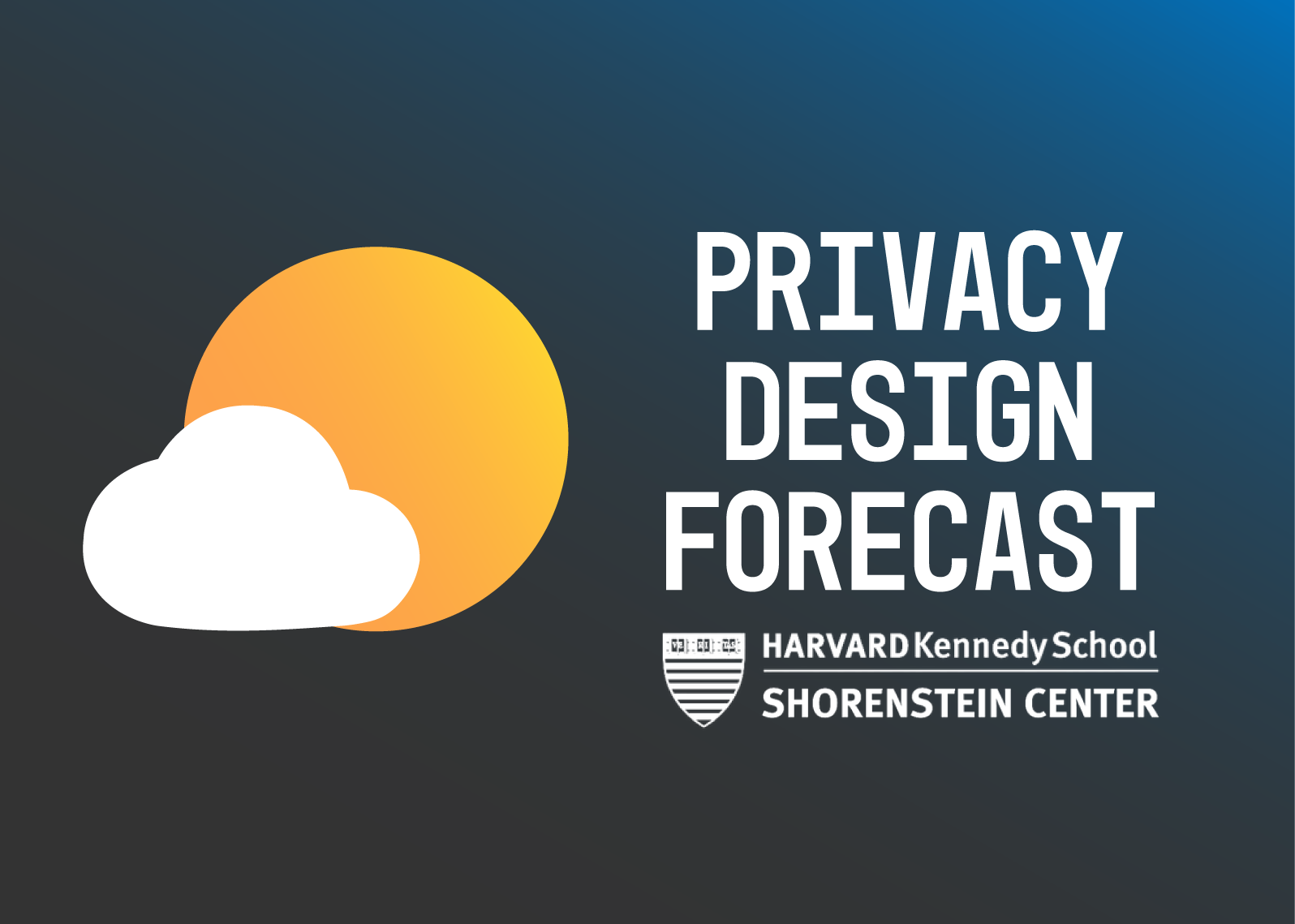Bridging Privacy Policy with Product Design
Privacy Design Forecast 2019 is a collection of design concepts illustrating how designers, researchers, and engineers are improving data privacy experiences in products around the world.
There is a gap between translating privacy principles into legislation that can effectively regulate new and existing technology. And there is also a gap in understanding about how technology works for policy makers who are creating the regulatory boundaries for that technology.
The current privacy status quo rests on users accepting convoluted Terms of Service and Privacy Policies – contracts that are universally unread. There is an asymmetric exchange. Companies are driven to gather as much data as possible while users are trying to maintain control of the impacts of this data on the personal, financial, health, and economic parts of their lives. This exchange has led to misuse and abuse in the collection, processing, and disclosure of personal information across a variety of fields in public, private and nonprofit sectors.
We placed a call to experts and practitioners in design, tech, academia, public sector, and consumer advocacy groups to contribute concepts and visuals that illustrate how consumers could regain control over their personal information.
The key questions we focused on for this work are:
- How might we reimagine meaningful, informed consent for sharing personal data?
- How does civil society, practitioners, and policymakers frame privacy and privacy through design?
- What interventions are being implemented across industries, disciplines and practices?
We received submissions from over 70 individuals spanning 8 countries and 10 states. Submissions by industry participants ranged from the design of facial recognition systems to city municipal alerts to internet browsers. Participants included representatives from academia, advocacy groups, foundations, non-profits, governments and private sector companies. This effort would not have been possible without the global effort from dozens of privacy-minded practitioners, researchers, and policymakers in the community.
These submissions show there is no single definition for privacy. In one context, it might mean upholding freedom of choice and the ability to avoid surveillance or profit-maximizing efforts. For another person, privacy might be about anonymity, the status quo in which your identity is unknown to a larger population of people. The contributions ranged in the level of involvement users will be expected to have to manage their data, and settings throughout the user experience based on the context of their concept and who the product or service is for. Lastly, several teams have created patterns, toolkits, and use cases that can be translatable across fields.
This is not an all inclusive summary of the state of privacy manifested through product design. This is also not the first time these questions have been surfaced. However, we hope this collection spurs conversation among our colleagues in the academia, policy, and technology realms to look at how to bridge the gaps between privacy legislation and design.
The project was led by Stephanie Nguyen, product designer and researcher at Harvard Kennedy School, and Hong Qu, Program Director for Technology at the Shorenstein Center.


